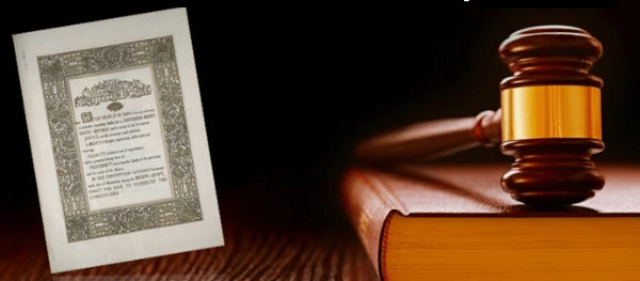Context:
The case of Property Owners Association vs State of Maharashtra before the nine-judge Bench of the Supreme Court of India addresses two crucial questions regarding the interpretation of the Indian Constitution. These questions revolve around the meaning of "material resources of the community" as mentioned in Article 39(b) and the immunity of laws made in furtherance of Article 39(b) from challenges based on fundamental rights to equality and freedom.
Understanding Article 39(b)
Article 39(b) of the Indian Constitution underscores the importance of securing material resources for the community's welfare. However, the term "material resources" lacks a precise definition, leaving room for interpretation. This ambiguity raises questions about the scope of legislative actions aimed at fulfilling this directive principle.
Clash of Fundamental Rights and Directive Principles
The second question looks into the conflict between Part III and Part IV of the Constitution. While Part III guarantees fundamental rights enforceable by the judiciary, Part IV outlines Directive Principles of State Policy (DPSP) as guiding principles for governance without enforceability in courts. This tension has historical roots, leading to constitutional amendments and judicial interventions.
Historical Context: Evolution of the Conflict
● Early Interpretations and Hierarchy: Initially, the Constitution delineated a clear hierarchy between fundamental rights and directive principles. Chief Justice S.R. Das emphasized the importance of implementing directive principles without compromising fundamental rights in the landmark case of Mohd. Hanif Quareshi vs State of Bihar (1958).
● Introduction of Article 31C: The balance between fundamental rights and directive principles was disrupted by the 25th Amendment in 1971, which introduced Article 31C. This provision aimed to shield laws enacted to fulfill Article 39(b) and (c) from judicial review based on violations of fundamental rights under Articles 14 and 19.
|
Article 31 C Article 31C protects laws enacted to ensure - 1. The “material resources of the community” are distributed to serve the common good (Article 39(b)) and 2. That wealth and the means of production are not “concentrated” to the “common detriment” (Article 39(c)). The amendment specifically mentioned the “Bank Nationalisation Case”, in which the SC stopped the Centre from acquiring control of 14 commercial banks by enacting the Banking Companies (Acquisition and Transfer of Undertakings) Act, 1969. |
Judicial Interventions
● Kesavananda Bharati Case: The seminal Kesavananda Bharati vs State of Kerala (1973) case provided clarity on the limitations of constitutional amendments. While the majority upheld Article 31C, it also introduced the concept of the basic structure doctrine, stating that amendments violating the Constitution's basic structure would be void.
|
Basic Structure of Constitution The basic structure doctrine is a common law legal doctrine that the constitution of a sovereign state has certain characteristics that cannot be erased by its legislature. The doctrine is recognised in India, Bangladesh, Malaysia, Pakistan, and Uganda. |
● Impact of Subsequent Amendments: Subsequent amendments, notably the 42nd Amendment in 1976, expanded the scope of Article 31C to encompass laws made in furtherance of any directive principle. However, judicial scrutiny continued, culminating in the Minerva Mills vs Union of India (1980) case, where the amendment was declared unconstitutional.
Legal Interpretations and Ambiguities
● Interpretation of Article 31C: Despite judicial pronouncements, ambiguity persists regarding the interpretation and validity of Article 31C. Contradictory judgments, such as Waman Rao vs Union of India, further complicate the issue, leaving fundamental rights and directive principles in perpetual conflict.
● Case Analysis: Property Owners Association vs State of Maharashtra: The current case presents an opportunity for the Supreme Court to address the unresolved clash between fundamental rights and directive principles. By scrutinizing a law allowing state control over dilapidated buildings, the Court can provide clarity on the applicability of Article 39(b) and the extent to which laws can be challenged based on fundamental rights.
Resolving the Conflict
● Clarifying Constitutional Ambiguities: The Supreme Court's decision in Property Owners Association vs State of Maharashtra holds immense significance in clarifying the relationship between fundamental rights and directive principles. By offering a comprehensive analysis of Article 31C and its adherence to the Constitution's basic structure, the Court can pave the way for a harmonious interpretation of constitutional provisions.
● Upholding Constitutional Guarantees: A balanced approach that upholds both fundamental rights and directive principles is essential for ensuring the Constitution's integrity. The Court's verdict in the current case can reinforce the supremacy of constitutional principles while safeguarding individual liberties and promoting the welfare of the community.
Conclusion
The Property Owners case presents a unique opportunity for the Supreme Court to settle the longstanding constitutional clash between fundamental rights and directive principles. Through a thorough analysis of Article 31C and its implications, the Court can provide clarity and coherence to India's constitutional framework, ensuring the preservation of democratic values and societal welfare.
|
Probable questions for UPSC Mains Exam-
|
Source: The Hindu







